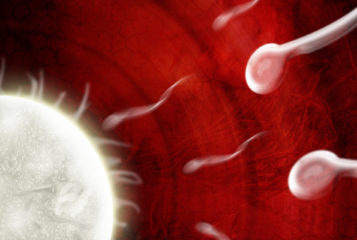This week, BioNews reports that the Human Fertilisation and Embryology Authority (HFEA) has published its proposed new guidance to licensed clinics on how to interpret the 'welfare of the child' principle laid down in section 13(5) of the Human Fertilisation and Embryology Act 1990.
The new guidance moves matters on in a slightly more liberal way - only in the obvious sense of not requiring GPs to respond to meaningless or unproductive questions about the suitability as parents of patients seeking fertility treatment. However, by omission, the guidance still authorises, indeed promotes, discrimination against the infertile, and some women are still made to jump through hoops to prove their fitness to be parents, which no other couples face.
Remarkably, within the review of the guidance on section 13(5), how clinicians should deal with the 'need for a father' stipulation has been completely side-stepped. The silence on this issue is deafening. The statutory requirement to consider the need of the (potential) child for a father may still be used by some clinics to deny treatment to all lesbian couples and/or single mothers, regardless of the individual's circumstances.
Let us just remind ourselves of the background to this situation. The 'need for a father' proviso was introduced into the 1990 Act at the last minute, by 'conservative-minded' people in the House of Lords. This is reminiscent of section 28 of the Local Government Act 1988, which forbade the promotion of homosexuality by local governments - another amendment which made prejudicial value judgements about how adults should live or behave in private.
The problem is not just the principle of a prejudice being put into statute and then into clinical practice, but that the 'need for a father' is also non-human-rights compliant. Article 14 of the European Convention on Human Rights (prohibition of discrimination), in conjunction with Article 8 (right to respect for privacy and family life), puts the requirement to consider the need of the child for a father on very shaky human rights grounds. There can be no human right for a father, but there are rights preventing discrimination against potential parents in the provision of fertility treatment. It is only the sensitive nature of the matter, and ability to get treated somewhere eventually, that has meant the 'need for a father' provision has not yet been tested in the courts.
Of course, the HFEA realises this, and that is why Suzi Leather announced that the need for a father provision was 'nonsense', in The Independent newspaper on 21 January 2004. It appears that the Government did not share her view, as the exchange I had with former health minister Melanie Johnson during the House of Commons Science and Technology Inquiry into Human Reproductive Technologies and the Law showed. Ms Johnson stated that 'our basic tenet is that as a general rule it is better for children to be born into a two-parent family with both mother and father'. Upon my questioning how single and lesbian parents might feel about falling short of her ideal, she replied that 'the government is not passing judgement'. But many would feel that her statement was judgmental.
In section 3.31 of its public consultation on the Review of the HFE Act, the government reiterates that 'it is better for a child to have both a father and a mother'. Maybe this is why the HFEA did not attempt to advise clinics in its guidance that blanket bans on the treatment of lesbians or single women are unacceptable.
It might be possible to support the need for a father provision if there was evidence that children in such families did badly. The precautionary principle, if sensibly applied, means we need good evidence of harm or evidence of serious harm before preventing parenthood. Yet, compared to income matched groups, families without fathers (but not necessarily lacking male role models) do not do badly at all.
Woody Allen said he could not see how children could survive even one mother, let alone two. However for once, on this question he was wrong. The work of psychologist Professor Susan Golombok, of City University, has investigated the effects on children's social, emotional, gender and identity development of conception by assisted reproduction procedures, as well as a number of studies of lesbian parents from the mid 1970s until the present time. They show that children in comparable socio-economic groups do just as well without fathers.
If we are to have evidence-based policy making, as the Government claims it wishes to see, then we need agencies that implement parliament's will - such as the HFEA - to issue evidence-based guidelines, rather than apparently politically-influenced evasions.
The Department of Health (DH) is currently seeking views on the Welfare of the Child, as part of its review of the HFE Act. The public are invited to respond formally to the DH. BioNews readers and any other interested individuals are also invited to informally debate their views on the welfare of the child, on a DH-funded online discussion forum run by Progress Educational Trust - the charity that publishes BioNews. Issues such as the need for a father, telling donor-conceived children about their origins and patient's views are currently being discussed in the 'Welfare of the Child' area. Feedback from this time-limited website will be submitted to the DH after the public consultation closes on 25 November 2005. Your views are much valued and all are welcome to contribute.






Leave a Reply
You must be logged in to post a comment.